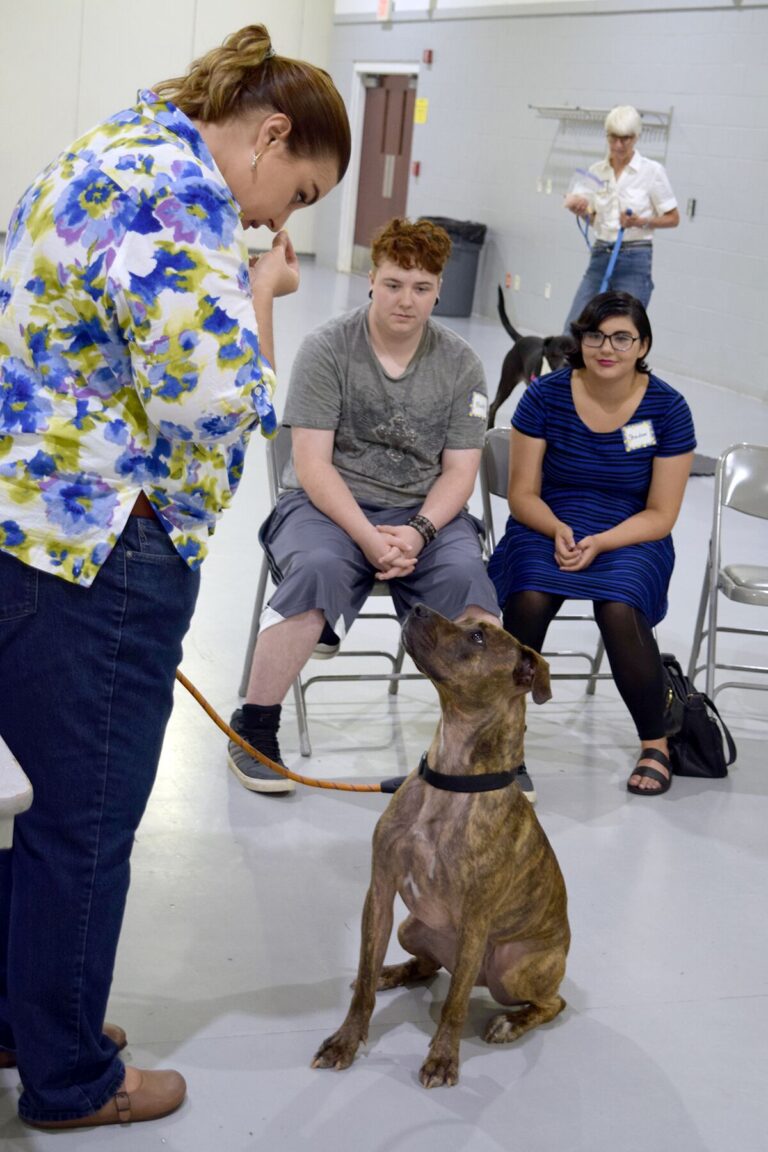Did you know Paws and Think is a firm believer in using only FORCE-FREE training methods with dogs. That’s true for our Youth Canine Program (instilling this education in our at-risk youth) and for our therapy dog courses (staff, volunteers and future handlers).
But what exactly does that mean?
We never rely on choke, prong or e-/shock collars to force
behaviors when working with dogs. Instead, we use positive reinforcement methods like praise, treats, toys, play, gentle touch and patience.
Here is a good tip from our amazing trainer, Kim Trimpe: If you give your dog a reward (for example, food) when he responds to you or offers an action or a behavior that you like (let’s say, sit), then that behavior is likely to be repeated.
Your dog learns that good things happen when he does what you ask. When paired with the removal or withholding of something the dog wants (like food, attention, or toys) for a short period of time, or redirecting unwanted behavior to one more acceptable to you, you can guide your dog into making good choices. With patience, consistency, and repetition, those good choices will become good habits. Traditional, correction-based trainers often argue that positive training shows weakness and a lack of leadership, but the truth is that the most respected and successful leaders are able to effect change without the use of force.
Here is a good example (and tip for new dog owners!): If you’re teaching a dog to sit on cue, instead of using a leash pop to try to elicit the behavior or physically trying to push the dog’s back end into the sit position, the kids in our Youth Canine programs will use a treat or toy to lure the dog into a sitting position and reward consistently. They will also “capture” the sit behavior when the dogs offer it on their own and reward that good choice made by the dog. The dogs learn very quickly that this is a behavior they want to repeat frequently (and happily!) – both when it’s asked of them, and just on their own.
Kim says, “I also am a firm believer that training a dog what TO DO, is easier and more humane than punishing a dog for what NOT to do. It’s not fair to punish a dog for a behavior you don’t like, if you haven’t taught the dog an alternate behavior and shown him what you want him to do instead; otherwise, how is he supposed to know?”
Great work, Kim! She’s a superstar at Paws & Think, overseeing our Youth Canine program!


